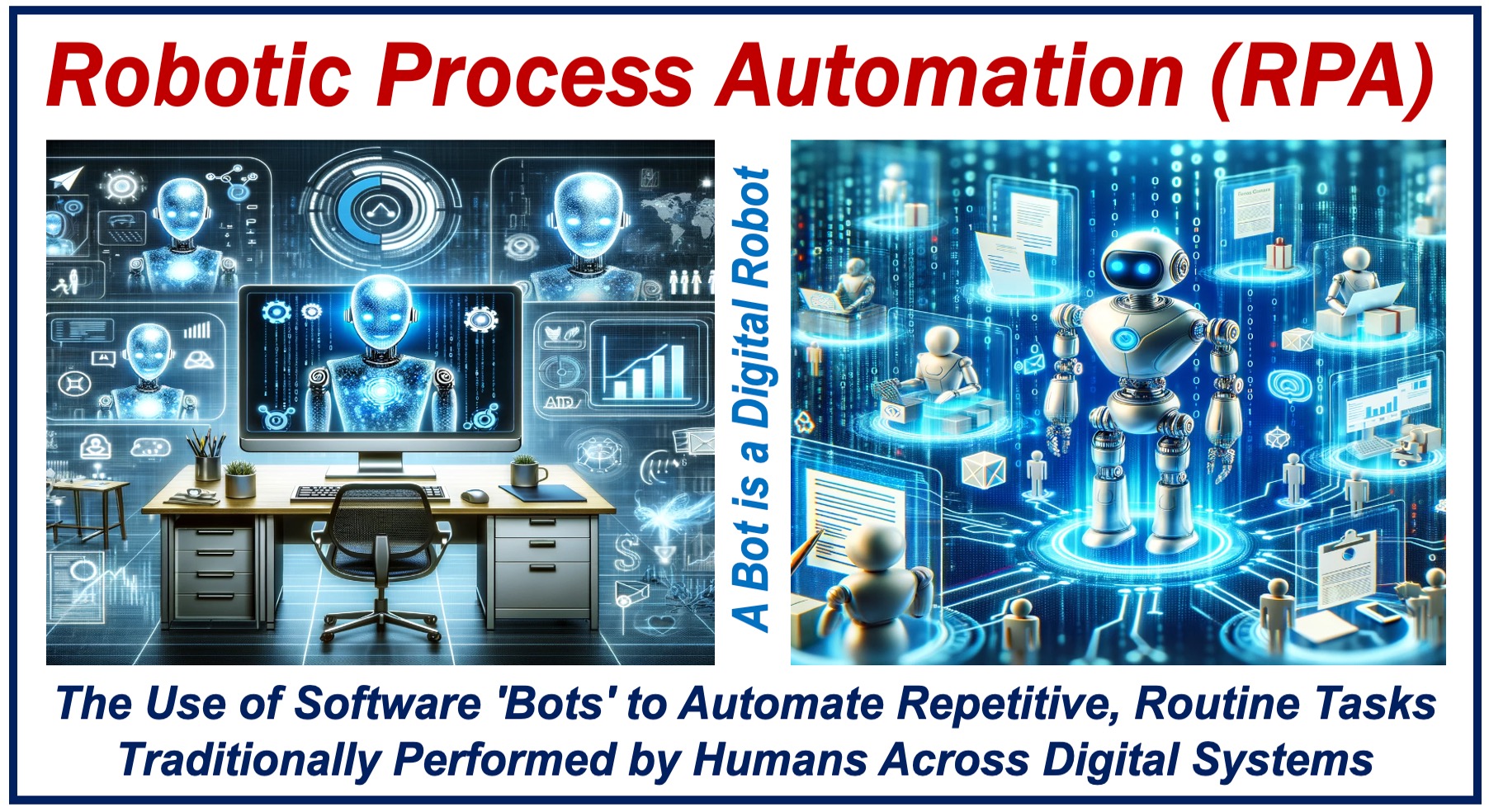Robotic Process Automation (RPA) or Software Robotics is a transformative tool that automates routine tasks and is rapidly changing how businesses operate. It helps us focus on more complex, rewarding, and valuable activities.
RPA uses digital robots, or ‘bots,’ to automate repetitive, rule-based tasks that have been traditionally performed by human workers. These bots can operate faster, more accurately, and with greater consistency than we can.
IBM (International Business Machines Corporation), an American multinational technology company, has the following definition of the term:
“Robotic process automation (RPA), also known as software robotics, uses intelligent automation technologies to perform repetitive office tasks of human workers, such as extracting data, filling in forms, moving files and more.”
Applications of robotic process automation
Let’s take a look at how RPA can be used:
-
Data Entry and Validation
It helps us automate routine data entry tasks. Using an RPA helps reduce errors and boost efficiency.
-
Customer Service
Bots are used to handle basic customer queries and ticketing processes. They are becoming more and more sophisticated. Don’t be surprised if soon we won’t be able to tell whether we are communicating with a human or a bot.
-
Payroll processing
Automating payroll tasks will make sure there is accuracy and compliance.
-
Invoice processing
They can process invoices and match them with purchase orders, which facilitates payments.

Benefits of robotic process automation
Here are some benefits that RPA can offer:
-
Increased Efficiency and Productivity
Bots don’t get tired – they can work 24/7 nonstop, which significantly improves productivity.
-
Cost reduction
Automation cuts labor costs and operating expenses.
-
Accuracy and Quality
Bots tend to make fewer mistakes than humans, thereby enhancing the overall quality of the work produced.
-
Scalability
RPA systems can be scaled up and down to meet changing business requirements.
-
Employee Satisfaction
When bots handle repetitive and monotonous tasks, employees can focus on more rewarding work, which improves job satisfaction.
Challenges
Here are some of the challenges you may face when you use RPA:
-
Process Selection
Identifying the appropriate processes for automation is crucial.
- Change Management
Integrating RPA into existing workflows may require some major organizational changes.
- Maintenance
Bots need ongoing maintenance and updates for them to continue working properly.
The future of robotic process automation
RPA has a promising future. With each passing day, new AI advancements emerge, further streamlining the automation process. In just a few years, or perhaps even months, we can anticipate witnessing the following developments:
-
Integration with AI and ML
Merging RPA with artificial intelligence (AI) and machine learning (ML) can lead to ‘smarter’ automation. Smarter automation, in this context, means systems that can learn, adapt, and make decisions with minimal human intervention, significantly enhancing efficiency and accuracy.
-
Wider Adoption across Industries
Beyond finance and insurance, it is expanding into healthcare, retail, and other areas.
-
Advancements in Natural Language Processing
Natural language processing (NLP) advancements are refining bots’ capabilities to interpret, comprehend, and respond to human language with a higher degree of sophistication, making interactions more seamless and intuitive for users.
Two Videos
These two interesting video presentations, from our sister YouTube channel – Marketing Business Network, explain what ‘Bot’ and ‘Automation’ are using simple, straightforward, and easy-to-understand language and examples.
-
What is a Bot?
-
What is Automation?
Written by Nicolas Perez Diaz
